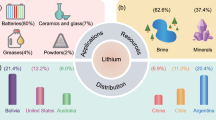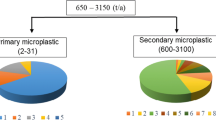Abstract
Biofouling in aquatic environments have a wide range of detrimental effects on man-made structures and cause economic loss. Current antifouling compounds including Diuron, dichlorofluanid, and Irgarol are toxic and can accumulate in marine environments. Thus, effective and environmentally friendly antifoulants are needed. Six structurally similar compounds were isolated from the brown alga, Sargassum horneri, based on bioactivity-guided isolation by reversed-phased liquid flash chromatography and high-performance liquid chromatography. Six chemical constituents possessing antifouling activities were identified as chromanols consisting of polyprenyl chain by nuclear magnetic resonance and mass spectroscopy. Antifouling activities of these six compounds were determined against representative fouling organisms including a hard fouling organism the mussel Mytilus edulis, a soft fouling macroalga Ulva pertusa, the biofouling diatom Navicula annexa, and the biofouling bacteria Pseudomonas aeruginosa KNP-3 and Alteromonas sp. KNS-8. The compounds could inhibit larvae settlement of mussel M. edulis with an EC50 of 0.11–3.34 μg mL−1, spore settlement of U. pertusa zoospores (EC50 of 0.01–0.43 μg mL−1), and the diatom N. annexa (EC50 of 0.008–0.19 μg mL−1). The two biofouling bacteria were sensitive to the tested compounds (minimum inhibitory concentration of 1.68–36.8 and 1.02–30.4 μg mL−1, respectively). From toxicity tests on juvenile Sebastes schlegelii fish, brine shrimp Artemia salina, and microalga Tetraselmis suecica, S3 had the lowest LC50 values of 60.2, 108, and 6.7 μg mL−1 and exhibited no observed effect concentration at 24.5, 41.6, and 3.1 μg mL−1 for these three tested marine organisms, respectively.

Similar content being viewed by others
References
Abdel-Lateff A, Elkhayat ES, Fouad MA, Okino T (2009) Aureobasidin, new antifouling metabolite from marine-derived fungus Aureobasidium sp. Nat Prod Commun 4:389–394
Bhattarai HD, Ganti VS, Paudel B, Lee YK, Lee HK, Hong YK, Shin HW (2007) Isolation of antifouling compounds from the marine bacterium, Shewanella oneidensis SCH0402. World J Microb Biotechnol 23:243–249
Bianco EM, Teixeira VL, Pereira RC, De-Souza AM, Nucci P, Afonso IF, Rodrigues CR, Castro HC (2009) Brown seaweed defensive chemicals: a structure–activity relationship approach for the marine environment. Nat Prod Commun 4:173–178
Blunt JW, Copp BR, Hu WP, Munro MHG, Northcote PT, Prinsep MR (2008) Marine natural products. Nat Prod Rep 25:35–94
Bruder M, Smith SJ, Blake AJ, Moody CJ (2009) Synthesis of (±)-likonide B (smenochromene D) using a regioselective Claisen rearrangement, separation of the enantiomers and stereochemical assignment. Org Biomol Chem 7:2127–2134
Cardozo KHM, Garatini T, Barros MP, Falcao VR, Tonon AP, Lopez NP et al (2007) Metabolites from algae with economical impact. Comp Biochem Physiol C 146:60–78
Cho JY, Kwon EH, Choi JS, Hong SY, Shin HW, Hong YK (2001) Antifouling activity of seaweed extracts on the green alga Enteromorpha prolifera and the mussel Mytilus edulis. J Appl Phycol 13:117–115
Cho SH, Cho JY, Kang SE, Hong YK, Ahn DH (2008) Antioxidant activity of mojabanchromanol, a novel chromene, isolated from brown alga Sargassum siliquastrum. J Environ Biol 29:479–484
Clare AS, Rittschof D, Gerhart DJ, Maki JS (1992) Molecular approaches to nontoxic antifouling. J Invert Reprod Dev 22:67–76
Culioli G, Ortalo-Mange A, Vallas R, Hellio C, Clare AS, Piovetti L (2008) Antifouling activity of meroditerpenoids from the marine brown alga Halidrys siliquosa. J Nat Prod 71:1121–1126
Davis TA, Volesky B, Vieira RHSF (2000) Sargassum seaweed as biosorbent for heavy metals. Water Res 34:4270–4278
de Nys R, Steinberg PD, Willemsen P, Dworjanyn SA, Gabelish CL, King RJ (1995) Broad spectrum effects of secondary metabolites from the red alga Delisea pulchra in antifouling assays. Biofouling 8:259–271
Decho AW (2000) Microbial biofilms in intertidal systems: an overview. Continental Shelf Res 20:1257–1273
Fernández-Alba AR, Hernando MD, Piedra L, Chisti Y (2002) Toxicity evaluation of single and mixed antifouling biocides measured with acute toxicity bioassays. Anal Chim Acta 456:303–312
Finney DJ (1971) Probit Analysis. Cambridge University Press, London, p 333
Fourest E, Volesky B (1997) Alginate properties and heavy metal biosorption by marine algae. Appl Biochem Biotechnol 67:33–44
Fusetani N (2004) Biofouling and antifouling. Nat Prod Rep 21:94–104
Fusetani N (2011) Antifouling marine natural products. Nat Prod Rep 28:400–410
Guillard RRL, Ryther JH (1962) Studies of marine planktonic diatoms. I. Cyclotella nana Hustedt and Detonula confervacea Cleve. Can J Microbiol 8:229–239
Hall LW Jr, Gidding JM, Solomon KR, Balcomb R (1999) An ecological risk assessment for the use of Irgarol 1051 as an algaecide for antifouling paints. Crit Rev Toxicol 29:367–437
Holan ZR, Volesky B (1994) Biosorption of lead and nickel by biomass of marine algae. Biotech Bioeng 43:1001–1009
Holan ZR, Volesky B, Prasetyo I (1993) Biosorption of Cd by biomass of marine algae. Biotech Bioeng 41:819–825
Holt JS (1993) Mechanisms and agronomic aspects of herbicide resistance. Ann Rev Plant Physiol Plant Mol Biol 44:203–229
Horie S, Tsutsumi S, Takada Y, Kimura J (2008) Antibacterial quinone metabolites from the brown alga, Sargassum sagamianum. Bull Chem Soc Japan 81:1125–1130
IMO (The International Maritime Organization) (2001) International convention on the control of harmful anti-fouling systems on ships. www.imo.org
Ishitsuka M, Kusumi T, Nomura Y, Konno T, Kakisawa H (1979) New geranylgeranylbenzoquinone derivatives from Sargassum tortile. Chem Lett 8:1269–1272
Jang KH, Lee BH, Choi BW, Lee HS, Shin JH (2005) Chromenes from the brown alga Sargassum siliquastrum. J Nat Prod 68:716–723
Johnson AL, Bergman J, Sjogren M, Bohlin L (2004) Synthesis of barettin. Tetrahedron 60:961–965
Kim WS, Kim JW, Lee JH, Huh SH (2008) Effects of sodium cyanide (NaCN) on the endogenous rhythm of the oxygen consumption rate in the black rockfish Sebastes schlegeli. Ocean Sci J 43:107–113
Kuyucak N, Volesky B (1988) Biosorbents for recovery of metals from industrial solutions. Biotechnol Lett 10:137–142
Kwong TFN, Miao L, Li X, Qian PY (2006) Novel antifouling and antimicrobial compound from a marine-derived fungus Ampelomyces sp. Mar Biotechnol 8:634–640
Lamoree MH, Swart CP, van der Horst A, van Hattum B (2002) Determination of Diuron and the antifouling paint biocide Irgarol 1051 in Dutch marinas and coastal waters. J Chromatogr 970:183–190
Oh MY, Lee SB, Jin DH, Hong YK, Jin HJ (2010) Isolation of algicidal compounds from the red alga Corallina pilulifera against red tide microalgae. J Appl Phycol 22:453–458
Ortlepp S, Sjogren M, Dahlstrom M, Weber H, Ebel R, Edrada R, Thoms C, Schupp P, Bohlin L, Proksch P (2007) Antifouling activity of bromotyrosine-derived sponge metabolites and synthetic analogues. Mar Biotechnol 9:776–785
Ortlepp S, Pedpradap S, Dobretsov S, Proksch P (2008) Antifouling activity of sponge derived polybrominated diphenyl ethers and synthetic analogues. Biofouling 24:201–208
Pelegrin Y, Robledo D, Chan-Bacab MJ, Ortega-Morales BO (2008) Antileishmanial properties of tropical marine algae extracts. Fitoterapia 79:374–377
Plaza M, Cifuentes A, Ibanez E (2008) In the search of new functional food ingredients from algae. Trends Food Sci Technol 19:31–39
Plouguerné E, Ioannou E, Georgantea P, Vagias C, Roussis V, Hellio C, Kraffe E, Stiger-Pouvreau V (2010) Anti-microfouling activity of lipidic metabolites from the invasive brown alga Sargassum muticum (Yendo). Fensholt Mar Biotechnol 12:52–61
Qi SH, Miao L, Gao CH, Xu Y, Zhang S, Qian PY (2010) New steroids and a new alkaloid from the gorgonian Isis minorbrachyblasta: structures, cytotoxicity, and antilarval activity. Helv Chim Acta 93:511–516
Qiu Y, Deng ZW, Xu M, Li Q, Lin WH (2008) New a-nor steroids and their antifouling activity from the Chinese marine sponge Acanthella cavernosa. Steroids 73:1500–1504
Railkin AI (2004) Marine biofouling: colonization processes and defenses. CRC, Boca Raton
Ranke J, Jastorff B (2000) Multidimensional risk analysis of antifouling biocides. Environ Sci Poll Res 7:109–110
Rao JV, Kavitha P, Jakka NM, Sridhar V, Usman PK (2007) Toxicity of organophosphates on morphology and locomotor behavior in brine shrimp, Artemia salina. Arch Environ Contam Toxicol 53:227–232
Segawa M, Shirahama H (1987) New plastoquinones from the brown alga Sargassum sagamianum var. yezoense. Chem Lett 1:1365–1366
Seo YW, Park KE, Kim YA, Lee HJ, Yoo JS, Ahn JW, Lee BJ (2006) Isolation of tetraprenyltoluquinols from the brown alga Sargassum thunbergii. Chem Pharm Bull 54:1730–1733
Seo YW, Park KE, Nam TJ (2007) Isolation of a new chromene from the brown alga Sargassum thunbergii. Bull Korean Chem Soc 28:1831–1833
Shin HW (1998) Antifouling action of zosteric acid and copper on spores of Ulva fasciata Delile. Algae 13:271–274
Silva-Aciares F, Riquelme C (2008) Inhibition of attachment of some fouling diatoms and settlement of Ulva lactuca zoospores by film-forming bacterium and their extracellular products isolated from biofouled substrata in Northern Chile. Elect J Biotech 11:1–11
Tang H, Yi Y, Yao X, Zhang S, Zou Z, Li L (2002a) Glycerides from marine brown algae Sargassum carpophyllum. Chin J Mar Drugs 21:5–9
Tang H, Yi Y, Yao X, Zhou D, Lu T, Jiang Y (2002b) Studies on bioactive steroid constituents from Sargassum carpophyllum. Chin Pham J 37:262–265
Thomas KV, McHugh M, Waldock M (2002) Antifouling paint booster biocides in UK coastal waters: input, occurrence and environmental fate. Sci Total Environ 293:117–127
Tsoukatou M, Marechal JP, Hellio C, Novakovic I, Tufegdzic S, Sladic D, Gasic MJ, Clare AS, Vagias C, Roussis V (2007) Evaluation of the activity of the sponge metabolites avarol and avarone and their synthetic derivatives against fouling micro- and macroorganisms. Molecules 12:1022–1034
US-EPA (United States Environmental Protection Agency) (2002) Methods for measuring the acute toxicity of effluents and receiving waters to freshwater and marine organisms (EPA-821-R-02-012). 5th edn. Washington, DC
Vanhaaecke P, Persoone G, Claus C, Sorgeloos P (1981) Proposal for a short-term toxicity test with Artemia nauplii. Ecotoxicol Environ Saf 5:382–387
Wieczorek SK, Todd CD (1998) Inhibition and facilitation of the settlement of epifaunal marine invertebrate larvae by microbial biofilm cues. Biofouling 12:81–93
Xu Y, Li HL, Li XC, Xiao X, Qian PY (2009) Inhibitory effects of a branched-chain fatty acid on larval settlement of the polychaete Hydroides elegans. Mar Biotech 11:495–504
Yebra DM, Kiil S, Dam-Johansen K (2004) Antifouling technology—past, present and future steps towards efficient and environmentally friendly antifouling coatings. Prog Org Coat 50:75–104
Acknowledgments
This work was supported by the Soonchunhyang University Research Fund. The fish toxicity test was supported by the National Fisheries Research and Development Institute. Dr. Hyun-Jung Lim is thanked for help with the fish toxicity testing.
Author information
Authors and Affiliations
Corresponding author
Rights and permissions
About this article
Cite this article
Cho, J.Y. Antifouling chromanols isolated from brown alga Sargassum horneri . J Appl Phycol 25, 299–309 (2013). https://doi.org/10.1007/s10811-012-9864-7
Received:
Revised:
Accepted:
Published:
Issue Date:
DOI: https://doi.org/10.1007/s10811-012-9864-7




